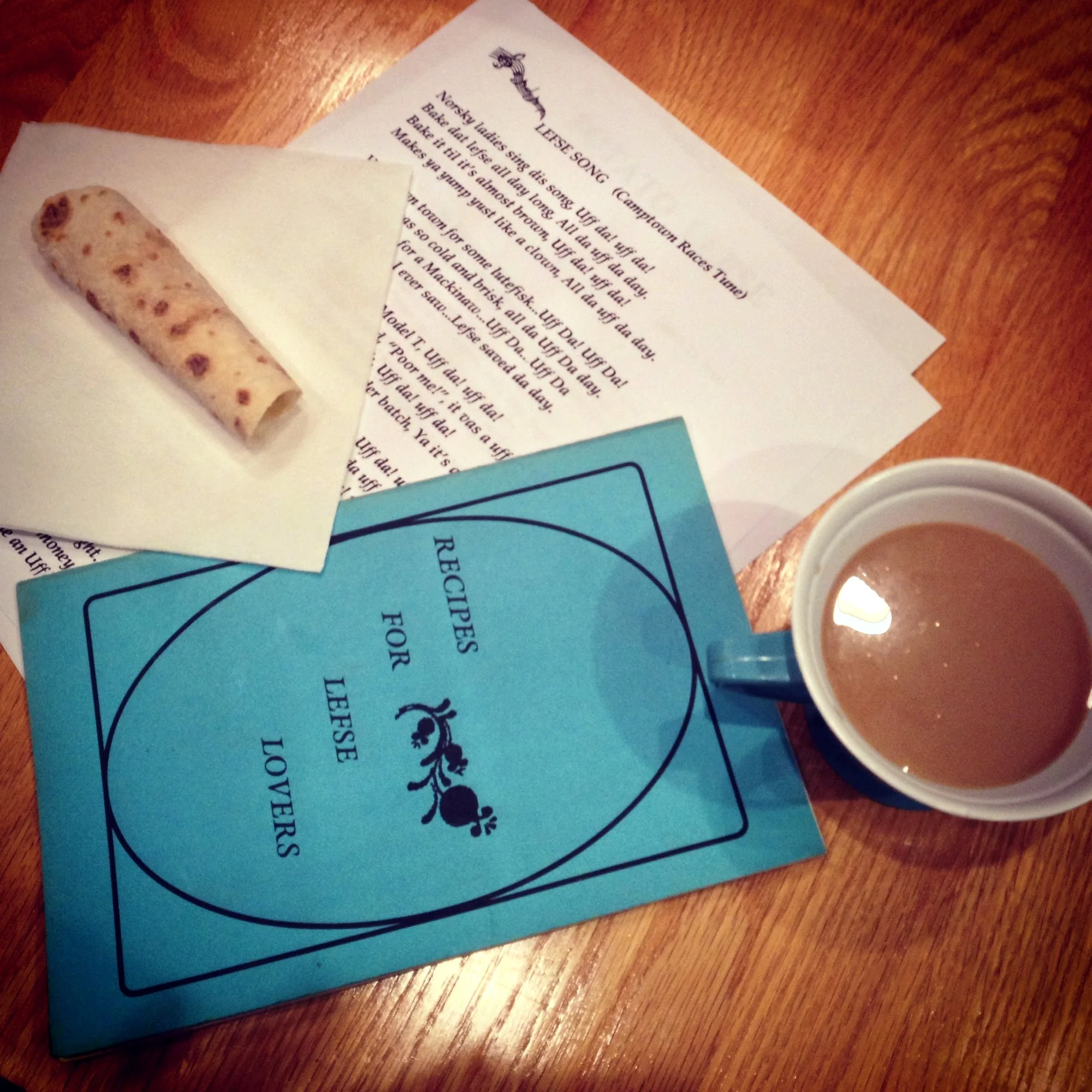



















February 23, 2013: I took a lefse class at the Bothell Sons of Norway lodge(http://www.bothellsonsofnorway.org/). Not familiar with this Norwegian specialty? It is a potato-based flatbread that is used for both savory and sweet purposes.The lodge offers cooking classes on Norwegian specialities relatively often. I have also taken a pickled herring class there in the past. Their classes are really reasonably priced (this one was $10), and I always like the opportunity to visit this kind of local community organization. I didn't have my big camera that day, so this will be all iphone pix - please excuse!

Mike Nelson taught our class. You can take the class at the lodge too (next class 10-19-13), OR: catch Mike on Youtube for a lefse lesson in your own home! http://www.youtube.com/watch?v=Dxq-66FN6R8

First, Mike showed us some tools you will need to make lefse. As mentioned, lefse is a potato-based flatbread, so you are going to need some form of potato masher or ricer. It's important for there to be no lumps, so personally, I'd rather use an actual ricer than one of these deals.

...a canvas-covered rolling board, sock-covered rolling pin, and griddle. You do NOT have to have this cool lefse equipment carrying case/fold-out lefse-making station that MIke has, but if you really get into it, make note of this handy design!

It's easier to roll on a higher counter, but if you are working on a table, you can make it a little more ergodynamic by raising it up a bit, as Mike did here with some bricks.

As mentioned before, both the board and the rolling pin are covered in fabric. Canvas on the board, and a sock on the rolling pin. And both are liberally rubbed with flour. Mike stressed the importance of keeping every surface dry. If your lefse starts sticking or tearing during the rolling, you'll need to figure out where the board or pin has become damp, and firmly rub more flour into that spot.

Mike demonstrates how to carefully slide the turner under your dough to lift it onto the griddle. (This is especially helpful to see in action - so check out the Youtube if you can't make the class: http://www.youtube.com/watch?v=Dxq-66FN6R8. )

The rolled-out dough cooks quickly. You let one side brown, then slide your turning stick under to quickly flip it over to finished the other.

You'll want to make several, but you don't want them to dry out, so sandwiching the finished lefse between two sheets or towels will help keep them pliable and moist while you finish cooking.

As mentioned, lefse can be used for savory or sweet preparations. You can roll up lunch meat in it for a little sandwich, or, as seems to be most popular, spread it with butter and sprinkle with cinnamon and sugar. Roll-up for a sweet accompaniment to your afternoon coffee.